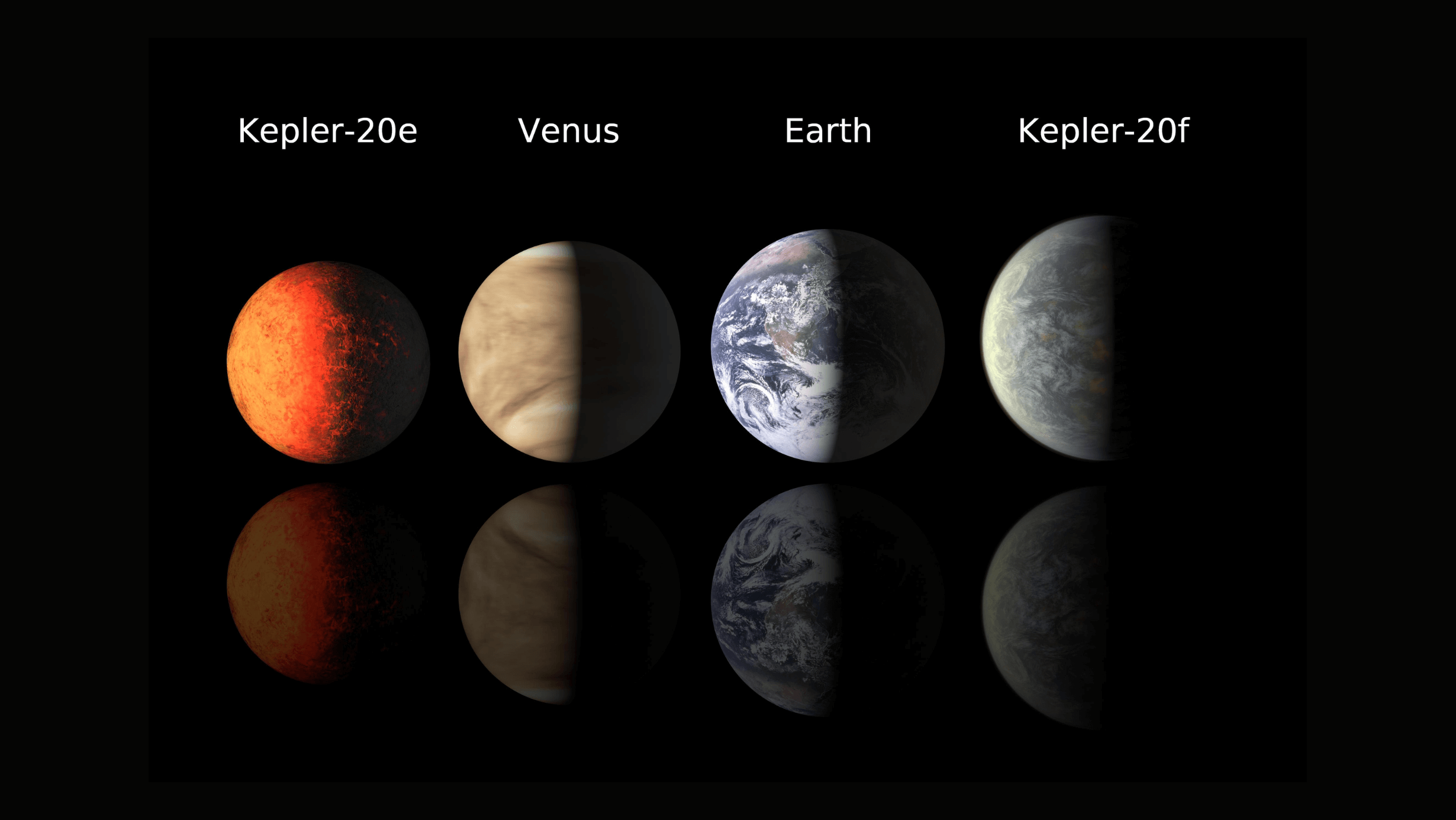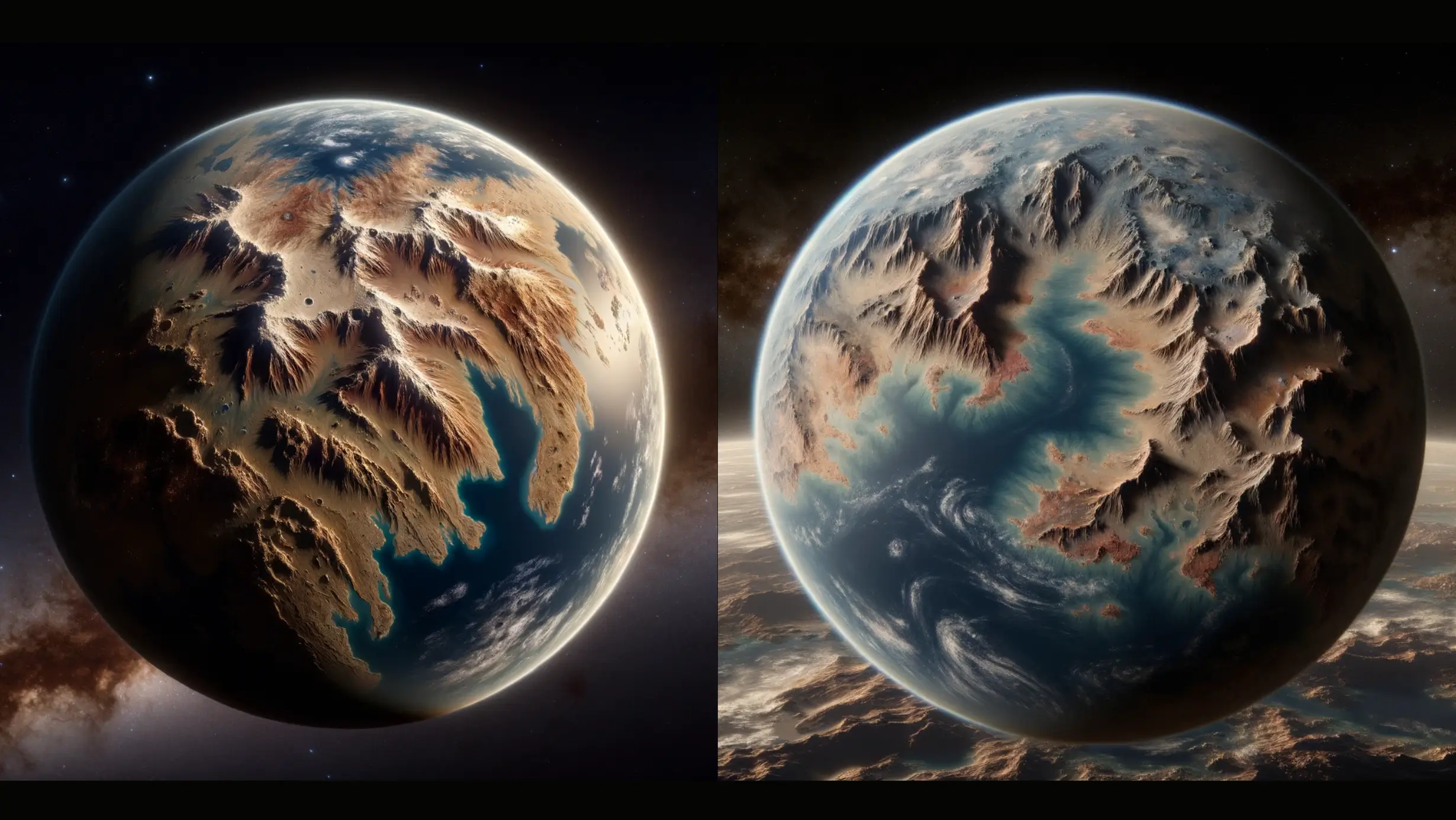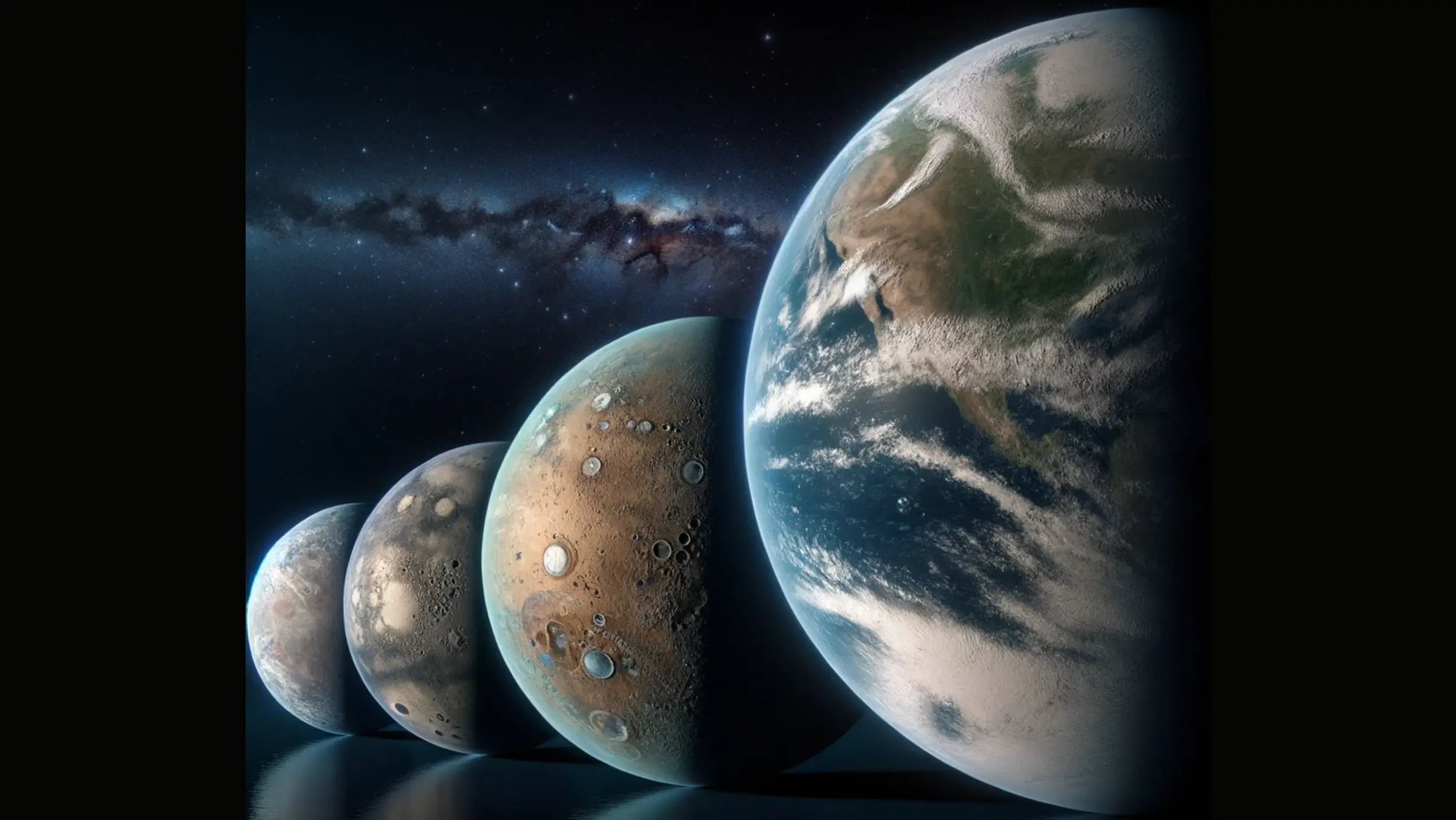An Earth-like planet is a planet with similar characteristics to our Earth. These characteristics include solid surface, an atmosphere and temperature right for liquid water to persist, location in the Goldilocks or habitable zone of the host sun-like star, an Earth-like magnetic field, and a stable orbit and axial tilt. Other characteristics are a stable climate and the presence of elements like carbon oxygen and nitrogen, which are necessary to sustain life. Our planet Earth is the only known planet out of trillions in the galaxy that has life and has no known analog so far.
Also read: Phoenix A* Black Hole: Largest black hole ever discovered
In this article, you will learn what qualifies a planet to be Earth-like, what planet is more like our Earth, and how many Earth-like planets exist.
What Qualifies As Earth-Like Planet?
An Earth-like planet is a planet that has similar characteristics to Earth. It must have a solid surface, an atmosphere with a suitable temperature for liquid water, and a location in the Goldilocks or habitable zone of its star. In addition, such a planet must also contain elements essential for life like carbon, nitrogen, and oxygen. There is no known analog of our planet Earth so far, however, the following are the main characteristics that would qualify a planet as Earth-like:
Presence In The Goldilocks Zone Or Habitable Zone
The Goldilocks Zone or habitable zone is a zone at the distance range of 0.99 to 1.7 AU from its star; the distance range our earth exists from the sun. At this zone, the temperature is right for liquid water to persist, otherwise, it would boil away or freeze. Existence in the Goldilocks or habitable zone is the main criterion for a planet to be Earth-like.
Also read: Eyeball Planets: The strange planets that could harbor Alien life
Outside our solar system, the number of discovered confirmed planets (called exoplanets) is currently more than 5,000. About 16 planets are located in the Goldilocks or habitable zones of their stars.

Having Liquid Water
Having liquid water is one of the basic criteria for a planet to be Earth-like, because liquid water is the main necessity for life. An Earth-like planet must have water because water is necessary for the development and sustenance of all life forms we know.
Rocky composition
Having a rocky composition and a solid surface is another factor that an Earth-like planet must have. Rocky composition is important for plate tectonics and other geological activities that can help to sustain life.

Magnetic Field
Planet Earth has a magnetic field that protects it from the cosmic radiation and other harmful charged particles the sun emits. The motion of molten iron at the core region of the earth generates this magnetic field. An Earth-like planet must have such a magnetic field to protect it from the harmful radiations of its star to allow the long-term survival of life forms.
🔬 Subscribe to SciMail
Get the latest science discoveries straight to your inbox!
Atmosphere
Another important factor for an Earth-like planet is a breathable atmosphere. Such an atmosphere must have a suitable combination of gasses like oxygen and nitrogen, which are vital for supporting life.
Moderate Climate
Another important characteristic of an Earth-like planet is a moderate climate. It will allow the presence of liquid water and a stable environment, which is important for life to sustain.
Stable Orbit And Axial Tilt
An Earth-like planet must also have a stable orbit and axial tilt. Stable orbit and axial tilt cause seasons and maintain the right conditions vital for life to flourish over a long period.
The Moon’s Influence
The moon has an important role in the habitability of our planet earth. It moderates the spin axis of our earth and leads to a stable climate. In such a way, it contributes to maintaining an ideal environment for life to develop and thrive. So the existence of a natural satellite (like our Earth’s moon) is also important for a planet to be Earth-like.
What Planet Is More Like Earth?
Kepler-452b is an exoplanet (a planet orbiting its star outside the solar system) that is more like Earth. It is also known as Earth’s cousin. The Kepler-452b planet is revolving within the habitable zone of its sun-like star Kepler 452. It is a super-Earth exoplanet and has at least five times higher mass and 1.5 times greater radius than our Earth. It is located in the Cygnus constellation, at a distance of about 1,800 light years from our Earth.

The distance Kepler-452b is orbiting its star is 156 million kilometers (1.4 AU), which is nearly the same as our Earth revolves around the sun (150 million kilometers or 1 AU). It completes one orbit around its star in 385 days (our Earth in 365 days and 5 hours).
Kepler-452b is the first discovered super-Earth rocky exoplanet revolving within the habitable zone of its host star, which is very sun-like. However, the habitability of this planet is unknown because it receives slightly more energy from its host star than Earth receives from the Sun. So it could be affected by a runaway greenhouse effect.
How Many Earth-Like Planets Exist?
According to NASA, the number of discovered confirmed exoplanets in the galaxy is over 5,000. The number of planets located in the Goldilocks or habitable zones of their stars is 16. A planet exactly Earth-like is elusive, however, the following is the list of closest known analogs to our Earth:
| S.No | Planet Name | Location | Distance From Earth | Mass compared to Earth | Radius Compared To Earth |
| 1 | Gliese 667 Cc | Scorpius Constellation | 23.62 light-years | 3.7 times Earth’s mass | 1.54 times Earth’s radius |
| 2 | Kepler-22b | Cygnus Constellation | 640 light-years | 9.1 times Earth’s mass | 2.1 times Earth’s radius |
| 3 | Kepler-69c | Cygnus Constellation | 2,700 light-years | 2.14 times Earth’s mass | 1.71 times Earth’s radius |
| 4 | Kepler-62f | Lyra Constellation | 1,200 light-years | Unknown | 1.461 times Earth’s radius |
| 5 | Kepler-186f | Cygnus Constellation | 580 light-years | 1.44 times Earth’s mass | 1.17 times Earth’s radius |
| 6 | Kepler-442b | Lyra Constellation | 1,206 light-years | 2.36 times Earth’s mass | 1.34 times Earth’s radius |
| 7 | Kepler-452b | Cygnus Constellation | 1,800 light-years | 5 times Earth’s mass | 1.5 times Earth’s radius |
| 8 | Kepler-1649 c | Cygnus Constellation | 301 light-years | 1.2 times Earth’s mass | 1.06 times Earth’s radius |
| 9 | Proxima Centauri b | Centaurus Constellation | 4.2 light-years | 1.07 times Earth’s mass | 1.03 times Earth’s radius |
| 10 | Trappist-1 e | Aquarius Constellation | 40.66 light-years | 0.692 times Earth’s mass | 0.92 times Earth’s radius |
Is There A Planet That Has Life Like Earth?
The galaxy is home to trillions of planets. Currently, our planet Earth is the only known planet that has life.


Leave a Reply